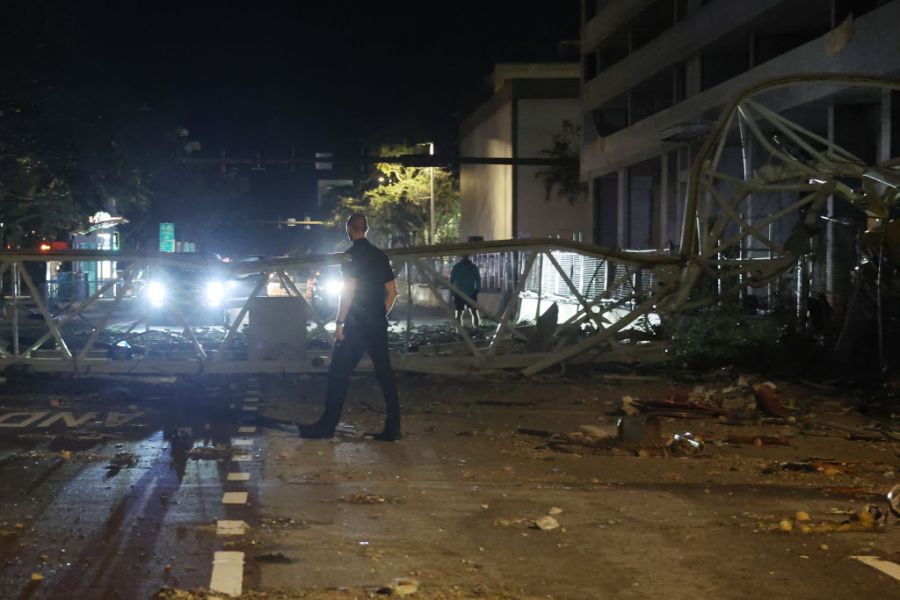‘Do we have to regulate everything?’: DeSantis on Milton crane crash
- Milton made landfall Wednesday in Florida as a Cat 3 hurricane
- A construction crane crashed into St. Petersburg office building
- DeSantis: More 'common sense' was needed ahead of storm
(NewsNation) — Hurricane Milton sent a massive crane crashing into the side of a St. Petersburg building on Wednesday, raising concerns about state regulations ahead of natural disasters and whether the state should have mandated the crane be taken down ahead of the storm.
Florida Gov. Ron DeSantis responded to the crane crash Friday, saying more “common sense” was needed.
“I think the question is, should there be more regulation, or should there just be more common sense?” DeSantis said. “I think it just takes a little bit of common sense.”
Milton sends massive crane crashing
The crane rammed into the side of a large office building Wednesday night, causing severe damage and partial collapse. Police said no one was inside the building during the crash, and caution tape was put up around the damaged area.
Developer Red Apple Group confirmed that at least one crane cab in the upper section of the mast fell, and they were working with city officials to assess the situation.
City officials blocked off several blocks until they could completely assess the damage and begin working to remove the toppled and twisted crane Thursday.
Experts said most cranes are designed for winds of at least 100 mph, and those in places like Florida, where hurricanes are a greater hazard, often have a greater wind resistance.
But there is only so much force a crane can handle. That’s why St. Petersburg Mayor Kenneth Welch warned anyone living near construction projects that use a crane to leave, and police made sure areas threatened were cleared.
Tom Barth of Barth Crane Inspections in Goose Creek, South Carolina, told The Associated Press that cranes have to be both raised and removed carefully, explaining that it could take days or longer to remove them.
That’s time that usually isn’t available once forecasters lock in on a potential path for a storm.
DeSantis: I don’t buy it
However, DeSantis said he “doesn’t buy” that it would have taken that long to take down a crane, especially in preparation for a massive hurricane projected to hit the area.
“I don’t buy this idea it takes weeks to mitigate,” DeSantis, a Republican, said. “I mean, they say the debris takes six months to a year. And then we got 40,000 cubic yards of debris off the Pinellas beaches just by bringing all of our people. … So, you know, things can be done.”
The governor questioned the necessity of additional regulations, emphasizing that common sense and local practices often suffice.
Guthrie agreed with DeSantis, saying local governments and construction workers must have contingency plans, as Florida’s geography makes it prone to natural disasters. He stressed that the government shouldn’t have to overstep by micromanaging everything, but rather, common sense should guide local decisions.
“Disasters are at the local level. At the end of the day, Pinellas County’s got a plan. St Pete’s got a plan. We need construction workers to have a plan, and you’ve got to have those contingencies,” Guthrie said. “I mean, it’s not like this snuck out from anywhere. I mean, we had strong seven to 10 days notice that things were heading in this direction.”
“To the governor’s point, there’s got to be a point where common sense comes into play. We cannot hold everybody’s hand and do everything for them,” he said. “That is not the function of government, whether it’s local county or the state government or even the federal government. It’s not their job to do that.”
Both agree that swift action and local oversight are crucial.
The Associated Press contributed to this report.












